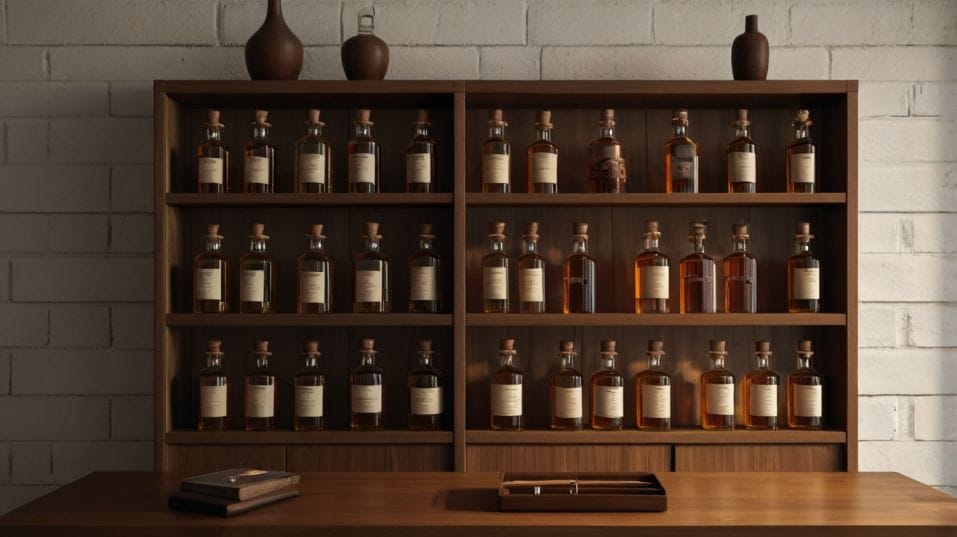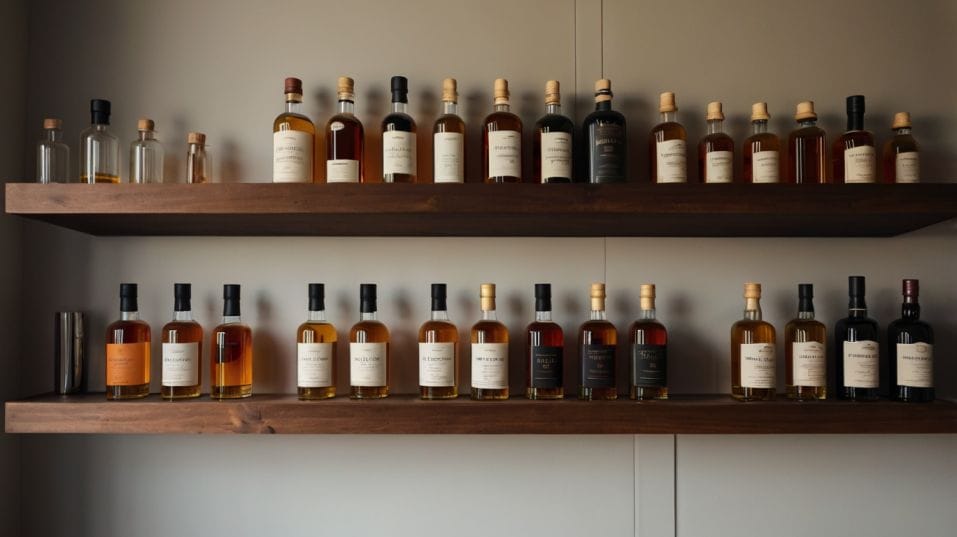How to Spot a Future Collector’s Bottle
Want to collect whiskey that actually matters? Learn how to spot future classics by focusing on distilleries, flavor, and timing—not hype.

What makes a whiskey bottle worth holding onto? For new collectors, the answer isn’t hype or rarity—it’s vision.
Spotting a future collector’s bottle means thinking beyond today’s trends and training your eye for long-term potential.
It’s about understanding origin, production, and intent. This guide will show you how to pick bottles that might not be famous yet—but soon will be. Ready to collect with confidence, not impulse? Here’s how to start.
Don’t Chase the Label—Trace the Distillery
The easiest mistake to make is thinking that rare equals valuable. It doesn’t. There are countless “limited releases” out there with gorgeous bottles and nothing to back them up but a marketing campaign.
Real collectors know to look past the front label and dig into who’s actually making the whiskey.
A distillery’s reputation isn’t built overnight. It’s forged over decades—sometimes centuries—of careful craftsmanship, smart decisions, and, yes, mistakes.
But those mistakes often lead to something interesting. A small, experimental line from a legacy distillery may not sell out instantly, but it could become the hidden gem in five years.
A quiet producer working outside the bourbon belt might be laying down stock that becomes the next cult obsession.
If you're just getting into collecting, get obsessed with origin. Learn who’s distilling what, where, and how. Find out which distilleries source their whiskey versus making it grain-to-glass.
Study production styles. Understand who ages on-site and who doesn’t. The name on the front might catch your eye, but it’s the story behind the whiskey that will give it lasting value.

Age Statements Are Clues—Not Guarantees
Let’s be clear: age doesn’t equal greatness. A whiskey can sit in a barrel for 25 years and still taste like furniture polish. But age does tell you something—especially when paired with other factors.
If you see a younger age statement—say, 6 to 10 years—but the whiskey tastes layered, expressive, and complete, that’s a huge signal.
It means the base spirit was good to begin with, the wood was managed well, and someone made smart blending decisions.
On the flip side, some older bottlings are over-oaked, flat, or simply past their peak. What matters is whether the age works with the whiskey—not against it.
Look for bottles where the age statement feels earned, not just decorative. Whiskeys that taste “older than they are” often age well in the bottle too, which matters if you’re holding on to them for the long game.
Also, keep an eye on firsts and lasts—first age-stated bottlings from young distilleries, or final releases before a brand changes direction.
These often become historical markers in a distillery’s timeline, and that kind of context makes bottles collectible.
Pay Close Attention to Bottling Specs
Want a shortcut to spotting a whiskey made for collectors, not casuals? Read the fine print.
Is it bottled at cask strength? Non-chill filtered? Single barrel? Small batch with transparency about how many barrels were used?
These aren't trendy terms—they’re technical choices that show how much respect the producer has for the spirit.
Cask strength releases give you the whiskey in its raw, undiluted form. That means more intensity, more structure, and more aging potential in the bottle.
Non-chill filtering preserves texture and complexity that can be lost in the name of mass appeal. Single barrels offer one-off snapshots of character that’ll never be replicated.
Producers don’t take these steps lightly. When you see these specs, it usually means someone in the process—be it the distiller, the blender, or the bottler—was aiming for a deeper, more serious whiskey.
And if they’re bottling like that now, odds are they’re building something worth watching long term.
Seek Out the Turning Points
Some bottles are collectible because they taste amazing. Others are collectible because they mark a moment in time. The best collector’s bottles do both.
What to Look For
Watch for inflection points—first releases from new stills, final vintages before recipe changes, the return of a mothballed distillery, the year a key blender retired, or when a historic distillery released a new mash bill.
These are often sleeper hits when they drop, but they gain meaning (and value) as context builds around them.
Whiskey is a living product. A distillery's evolution over time is part of the story. If you can spot the bottles that represent key turning points before the world catches up, you’re not just collecting whiskey—you’re collecting history.
And that kind of insight pays off later, when everyone else is hunting for what you already picked up.
Train Your Palate Like a Tool
Forget ratings. Forget awards. The only voice that matters in your collecting journey is your own palate—and like any instrument, it needs tuning.
Every time you open a new bottle, ask questions. What do you smell? What flavors evolve as it sits in the glass? Does it have a strong mid-palate? A long finish?
Does it feel balanced or chaotic? These aren’t just tasting notes—they’re data points. Over time, you’ll start noticing patterns in the kinds of whiskey that age well, surprise you, or keep pulling you back in.
Collectors with great palates don’t just buy hype bottles. They feel when a whiskey is special. They remember that weird, funky rye that tasted like burnt orange and cigar ash—or the delicate malt that turned floral after 10 minutes in the glass. They trust their instincts.
The more you train your palate, the better your odds of spotting the next classic—before everyone else drives up the price.
Watch the Whiskey, Not the Market
Chasing bottle prices is like timing the stock market—you’ll lose more than you win. The smartest collectors aren’t buying whiskey for short-term flips.
They’re building a library of flavor, technique, and meaning. That means collecting slow. Collecting thoughtfully. Choosing bottles that make sense, not just headlines.
Stay off the secondary market unless you really know what you're doing. You’ll spend too much for too little, and you’ll probably miss what’s right in front of you.
Most of the best future collector’s bottles are sitting on shelves right now, overlooked, because they don’t have a flashy story—yet. Patience pays. And in whiskey, it often pays in flavor.
Final Thoughts
If you want to collect whiskey like someone who actually understands the game, start by ignoring the noise. Forget “limited edition” stickers.
Focus on quality distilleries, smart bottling choices, honest age statements, and overlooked turning points in whiskey history. Most of all, trust your palate—and keep sharpening it.
Every great collection starts with one smart bottle. So find something this week that excites you, not the market. Taste it with intention. Write down what you notice. Start building your own sense of what matters.
Because collecting whiskey isn’t about having what everyone else wants—it’s about knowing something they don’t. Yet.




